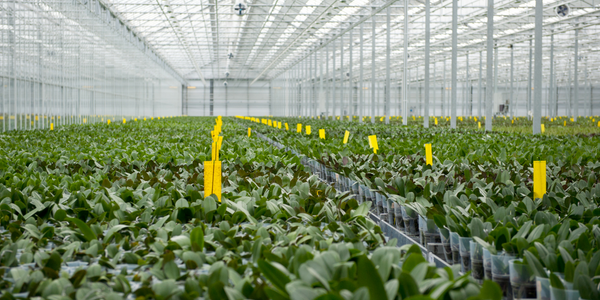Download PDF
Cargill Uses Kong to Create Unified API Platform Across Legacy and Cloud Native
Technology Category
- Application Infrastructure & Middleware - API Integration & Management
- Platform as a Service (PaaS) - Connectivity Platforms
Applicable Industries
- Food & Beverage
- Agriculture
Applicable Functions
- Discrete Manufacturing
- Logistics & Transportation
Services
- Cloud Planning, Design & Implementation Services
- System Integration
The Challenge
Cargill, a global leader in the food, agriculture, financial and industrial sectors, was facing challenges in creating new digital products and services due to its legacy IT systems. The company's existing systems were slowing down its ability to innovate and meet the evolving needs of its customers and partners. Cargill recognized the need for a more dynamic and accessible internal suite of APIs to enable consumption across the entire company. The company wanted to transition from siloed legacy IT architecture to a modern, microservices architecture. However, the legacy API management vendors they considered were not aligned with their vision for decentralization.
About The Customer
Cargill is a global company with a mission to nourish the world in a safe, responsible and sustainable way. The company is headquartered in Minneapolis, Minnesota and serves as a trusted partner for food, agriculture, financial and industrial customers across more than 125 countries. Cargill is one of the largest private companies operating today, employing over 150 thousand people worldwide and handling logistics for over 33 percent of the world’s food supply. The company has been in business for over 150 years and combines extensive supply chain experience with new technologies and insights.
The Solution
Cargill chose Kong, a high-performance API platform, to help them transition from a centralized to a decentralized platform. Kong's lightweight and fast performance made it an ideal choice for Cargill's vision of running at the edge, with Kubernetes or in a mesh. Kong's out-of-the-box management tools and open source ecosystem provided Cargill with robust capabilities to simplify management of APIs across their entire lifecycle. Kong also enabled Cargill to create a scalable, standardized developer experience, ensuring consistent standards and governance across thousands of internal and external developers consuming their services worldwide. Furthermore, Kong's native support for Kubernetes was a critical factor in enabling Cargill to easily scale up and down with demand.
Operational Impact
Quantitative Benefit
Related Case Studies.

Case Study
Intelligent Farming with ThingWorx Analytics
Z Farms was facing three challenges: costly irrigation systems with water as a limited resource, narrow optimal ranges of soil moisture for growth with difficult maintenance and farm operators could not simply turn on irrigation systems like a faucet.

Case Study
The Kellogg Company
Kellogg keeps a close eye on its trade spend, analyzing large volumes of data and running complex simulations to predict which promotional activities will be the most effective. Kellogg needed to decrease the trade spend but its traditional relational database on premises could not keep up with the pace of demand.

Case Study
HEINEKEN Uses the Cloud to Reach 10.5 Million Consumers
For 2012 campaign, the Bond promotion, it planned to launch the campaign at the same time everywhere on the planet. That created unprecedented challenges for HEINEKEN—nowhere more so than in its technology operation. The primary digital content for the campaign was a 100-megabyte movie that had to play flawlessly for millions of viewers worldwide. After all, Bond never fails. No one was going to tolerate a technology failure that might bruise his brand.Previously, HEINEKEN had supported digital media at its outsourced datacenter. But that datacenter lacked the computing resources HEINEKEN needed, and building them—especially to support peak traffic that would total millions of simultaneous hits—would have been both time-consuming and expensive. Nor would it have provided the geographic reach that HEINEKEN needed to minimize latency worldwide.

Case Study
Greenhouse Intelligent Monitoring and Control Solution
Farming Orchids is the most successful form of precision farming in Taiwan, and also the most exported flower. Orchids need a specific temperature and humidity conditions to grow and bloom, and its flowering time may not be in line with market demands, so the price collapses when there is overproduction. Therefore, some farmers began to import automated greenhouse control systems for breeding and forcing, which not only improves quality, but also effectively controls the production period and yield to ensure revenue. In 2012, an orchid farmer built a Forcing Greenhouse of about 200 pings (approximately 661 Square Meters) in Tainan, Taiwan. The system integrator adopted Advantech’s APAX-5000 series programmable automation controllers to build the control platform, coupled with Advantech WebAccess HMI/SCADA software, to achieve cloud monitoring. The staff of the orchid field can monitor important data anytime via smart phone, iPad, and other handheld devices, and control the growth and flowering conditions. System requirements: In the past, most environmental control systems of orchid greenhouses in Taiwan used PLCs (Programmable Logic Controller) with poorscalability and control, and could not be connected to the Internet formonitoring from the cloud. For advanced database analysis and networking capability, the PC platform must be adopted. Therefore, PAC Systems (Programmable Automation Controller) with both PLC programming capabilities andPC functions is a better choice.The environmental control of the Orchid greenhouse switches on and off devices like fan, shade net, cooling/heat pump, liquid flow control, water-cooling wall etc. It is controlled by a control panel of electric controllers, and is driven by a motor, to adjust the greenhouse temperature, humidity, and other environmental conditions to the set parameters.






